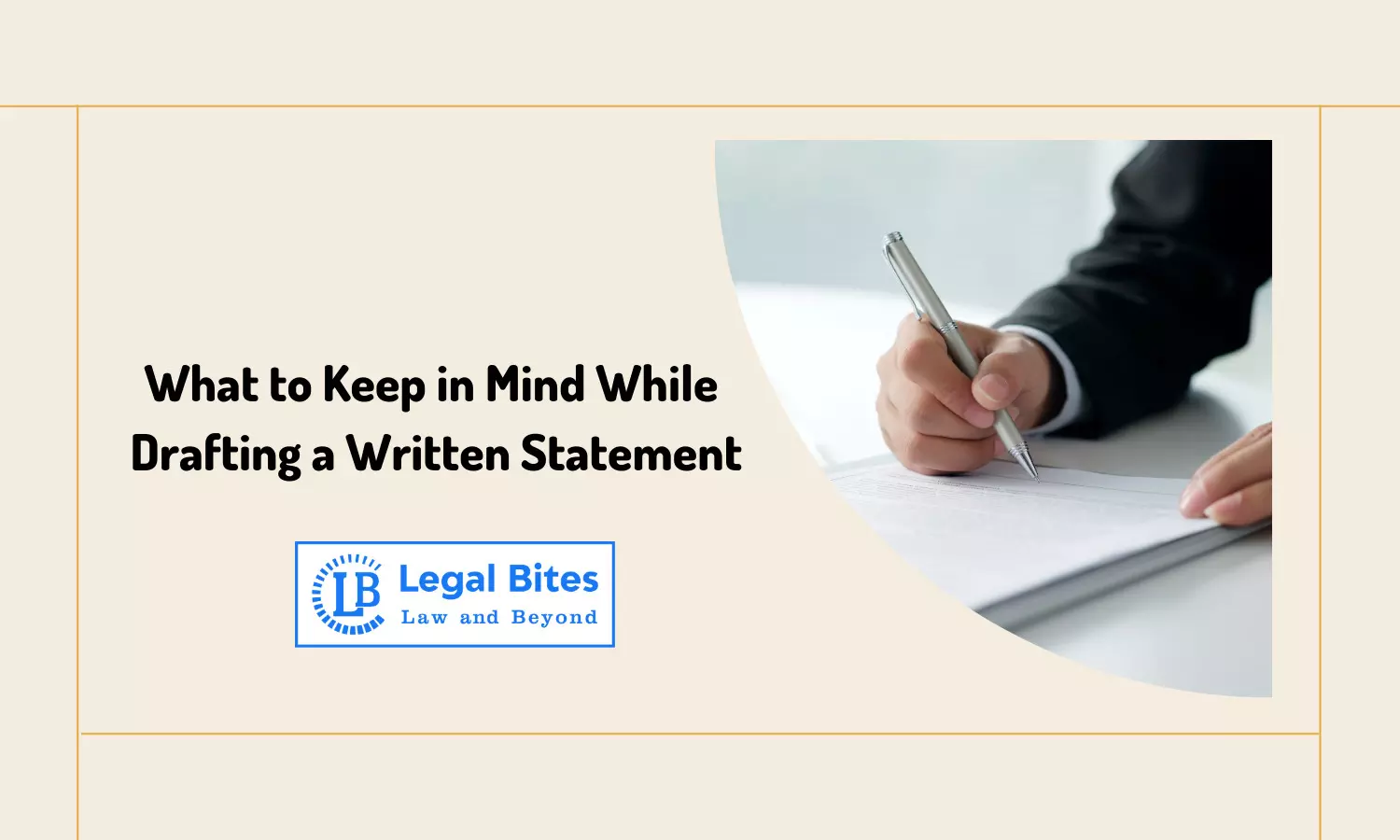What to Keep in Mind While Drafting a Written Statement
These points guide the drafting of a legally compliant, well-structured written statement that effectively presents the defendant's case in court.

A written statement is the defendant's response to the plaintiff's claims in a civil suit, outlining their defence and any counterclaims they may have. Drafting a well-structured and comprehensive written statement is crucial for ensuring that the defendant's position is presented before the court.
Below are key points to remember when drafting a written statement, especially for legal professionals:
1. Comply with Legal Provisions
Ensure that the written statement complies with the provisions of the Code of Civil Procedure (CPC), particularly Order VIII. The written statement must address every fact alleged in the plaintiff's complaint, either admitting or denying it.
2. Address Every Allegation
Each allegation made by the plaintiff should be specifically responded to. General denials are not sufficient; each fact should be dealt with, either affirming or denying it, with clear and concise reasoning.
3. Raise Preliminary Objections
Before addressing the merits of the plaintiff's case, it’s essential to raise preliminary objections if any. These objections may include:
- Jurisdictional issues
- Lack of cause of action
- Misjoinder or non-joinder of necessary parties
- Limitation period
4. Include a Counterclaim or Set-off (if applicable)
If the defendant has a counterclaim against the plaintiff, it should be raised in the written statement. A counterclaim is treated as a separate suit but is presented as part of the defendant's written statement.
5. State the Facts Clearly
It is important to present the facts clearly and chronologically, explaining the defendant's side of the story. Each fact should be supported by documents or evidence, if available.
6. Consistency and Precision
The defence should be consistent throughout the document. Contradictory statements can weaken the defendant’s case. Precision in wording is crucial to avoid any ambiguity that could be exploited by the plaintiff.
7. Avoid Admissions
Be cautious when admitting facts. While some admissions may be unavoidable, it’s better to avoid unnecessary admissions that could strengthen the plaintiff’s case. Every statement should be carefully worded to avoid any inadvertent admissions.
8. Pleadings Should Be Brief but Comprehensive
While the written statement should comprehensively cover all aspects of the defence, it should also be concise and to the point. Avoid irrelevant details, and focus on material facts and legal arguments.
9. Incorporate Legal Defenses
Ensure that the written statement includes all legal defences that may be available to the defendant, such as estoppel, limitation, or fraud. These defences must be specifically pleaded and cannot be raised later if omitted.
10. Verification and Signature
The written statement must be verified by the defendant, affirming that the statements made in the document are true to the defendant’s knowledge and belief. It must also be signed by the defendant or their authorized legal representative.
11. Timely Submission
As per the CPC, a written statement should be filed within 30 days from the date of service of summons. An extension of up to 90 days may be granted by the court under certain circumstances, but it’s always advisable to file within the initial 30-day period.
12. Seek Professional Assistance
While defendants can draft their written statements, it is highly recommended to seek professional legal assistance. An advocate experienced in civil litigation can help ensure that the written statement is drafted by the law and best serves the defendant’s interests.
13. Conclusion
The written statement should conclude with a prayer requesting the court to dismiss the plaintiff’s claim and provide any additional relief that the defendant seeks, such as costs or damages.
14. Documentary Evidence
Any documents or evidence supporting the defendant’s case should be referred to in the written statement and filed alongside it. These documents should be properly indexed and authenticated.
By keeping these key points in mind, the defendant can ensure that their written statement is effective, legally compliant, and strengthens their defence. Properly drafted, a written statement can be instrumental in winning the case or securing a favourable settlement.
Click Here to Understand the Format of the Written Statement

